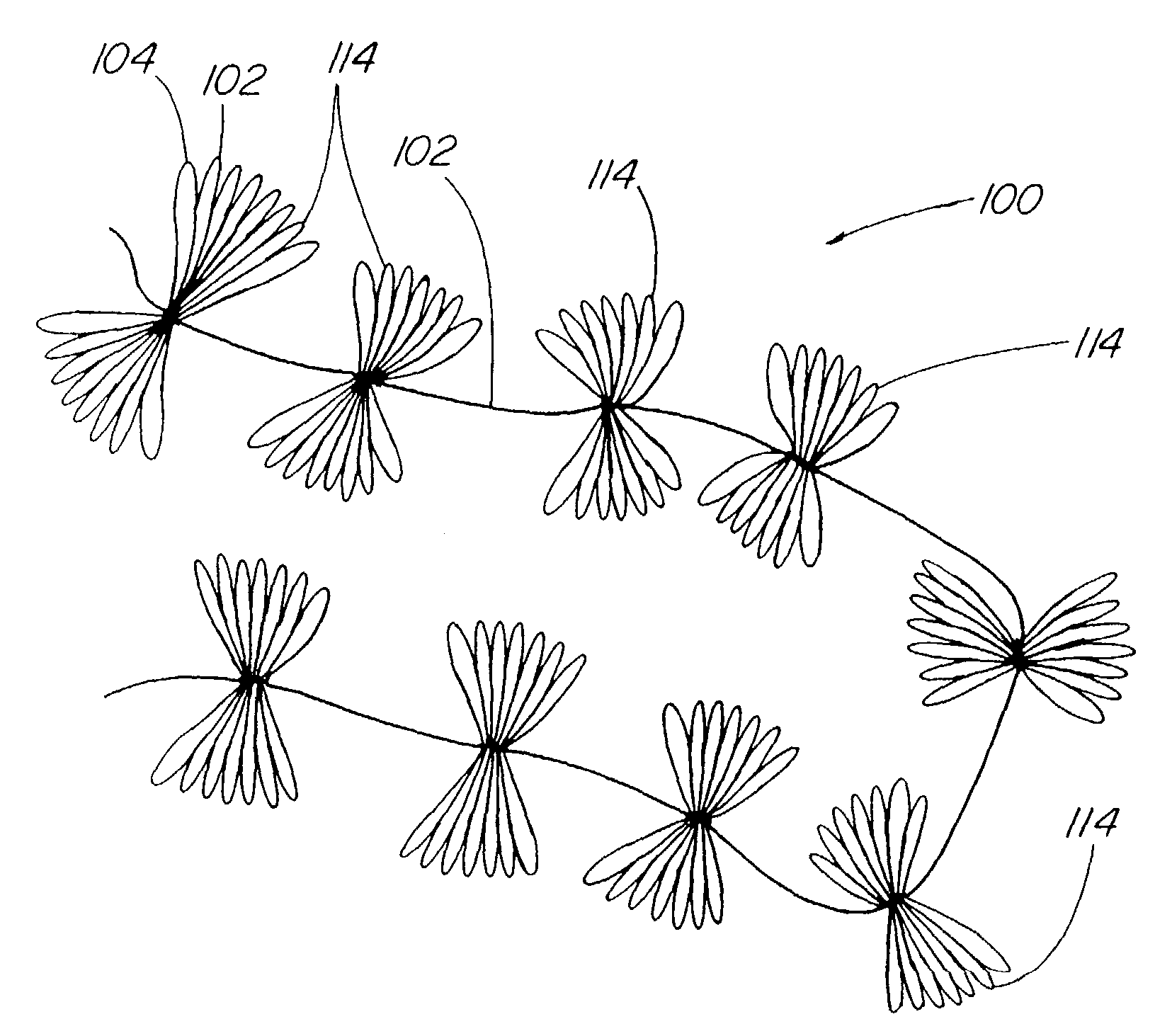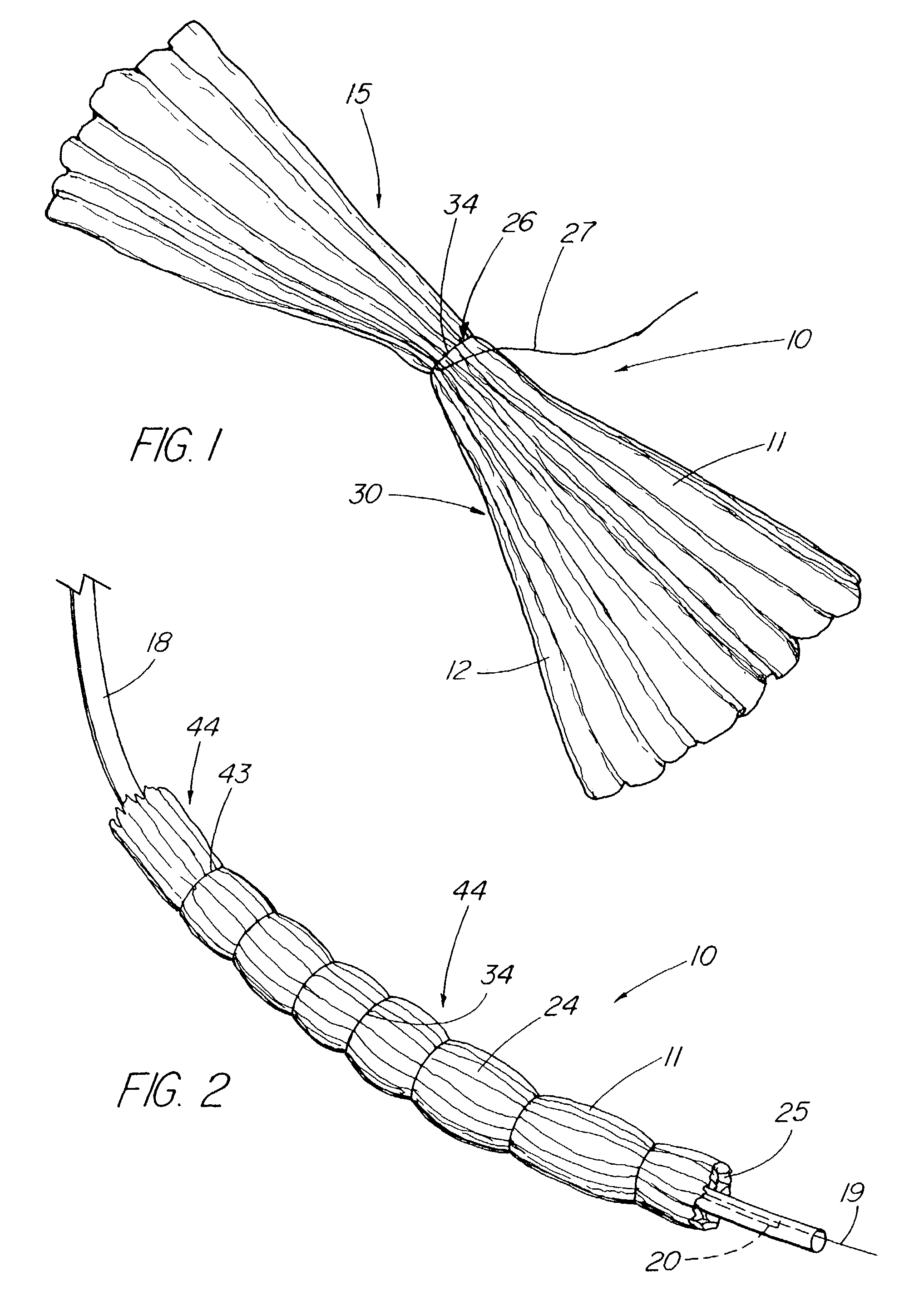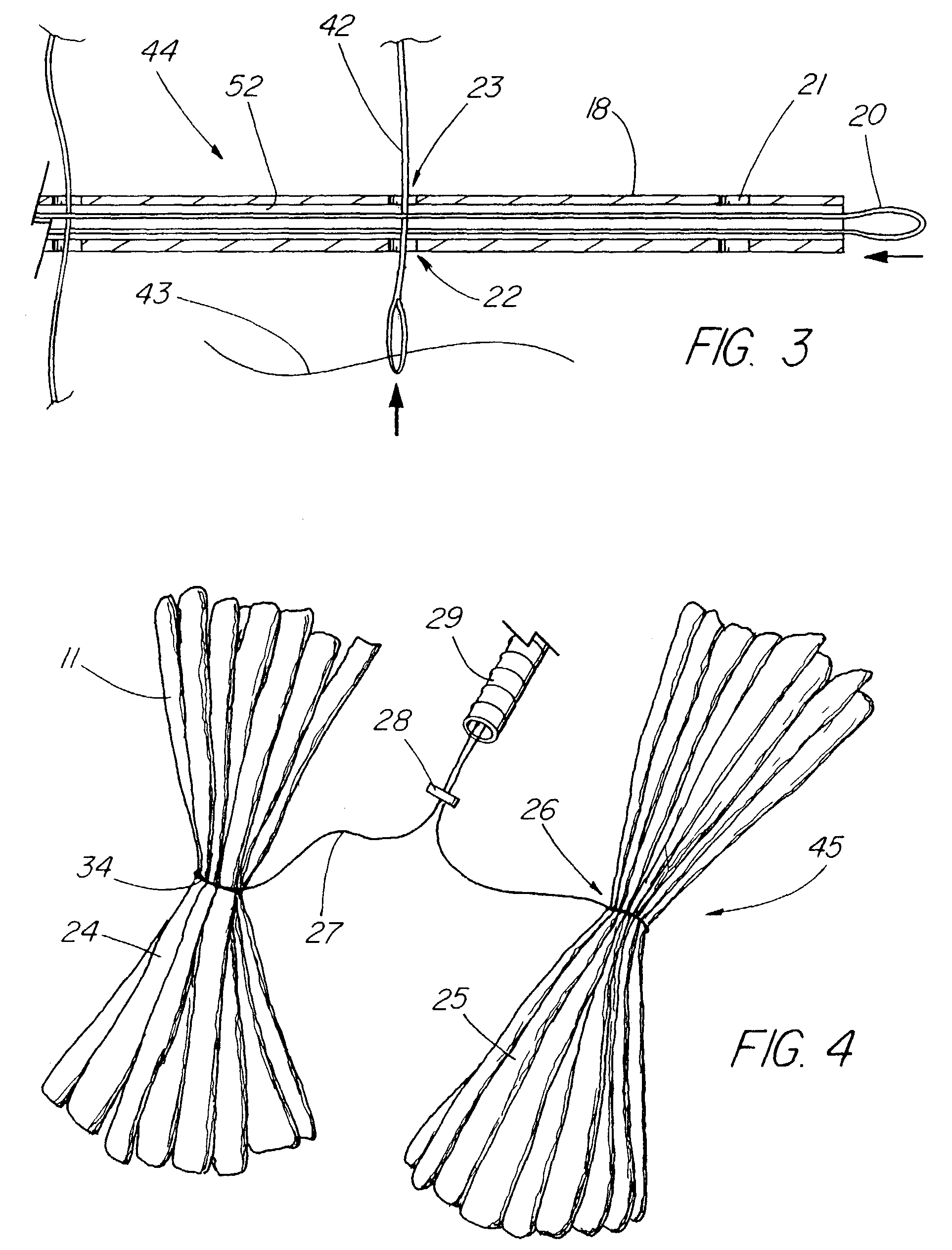Intragastric device for treating obesity
a technology of intragastric devices and obesity, applied in the field of medical devices, can solve the problems of many patients eventually returning to their original weight, difficult to treat obesity, and rarely long-term, and achieve the effect of small volume and convenient placement and retrieval
- Summary
- Abstract
- Description
- Claims
- Application Information
AI Technical Summary
Benefits of technology
Problems solved by technology
Method used
Image
Examples
Embodiment Construction
[0042]The obesity treatment apparatus 10 of the present invention depicted in FIGS. 1–25 comprises one or more intragastric members 11, each comprising one or more digestive-resistant or indigestible member 12 sized and configured such that the intragastric member 11 can be placed into the stomach of a mammalian patient and reside therein, and being generally unable to pass through the pylorus. As used herein, the terms digestive-resistant and indigestible are intended to mean that the material used is not subject to the degrative effects of stomach acid and enzymes, or the general environment found within the gastric system over an extended period of time, therefore allowing the device to remain intact for the intended life of the device. This does not necessarily mean that the material cannot be degraded over time; however, one skilled in medical arts and gastrological devices would readily appreciate the range of material that would be suitable for use as a long-term intragastric...
PUM
 Login to View More
Login to View More Abstract
Description
Claims
Application Information
 Login to View More
Login to View More - R&D
- Intellectual Property
- Life Sciences
- Materials
- Tech Scout
- Unparalleled Data Quality
- Higher Quality Content
- 60% Fewer Hallucinations
Browse by: Latest US Patents, China's latest patents, Technical Efficacy Thesaurus, Application Domain, Technology Topic, Popular Technical Reports.
© 2025 PatSnap. All rights reserved.Legal|Privacy policy|Modern Slavery Act Transparency Statement|Sitemap|About US| Contact US: help@patsnap.com



